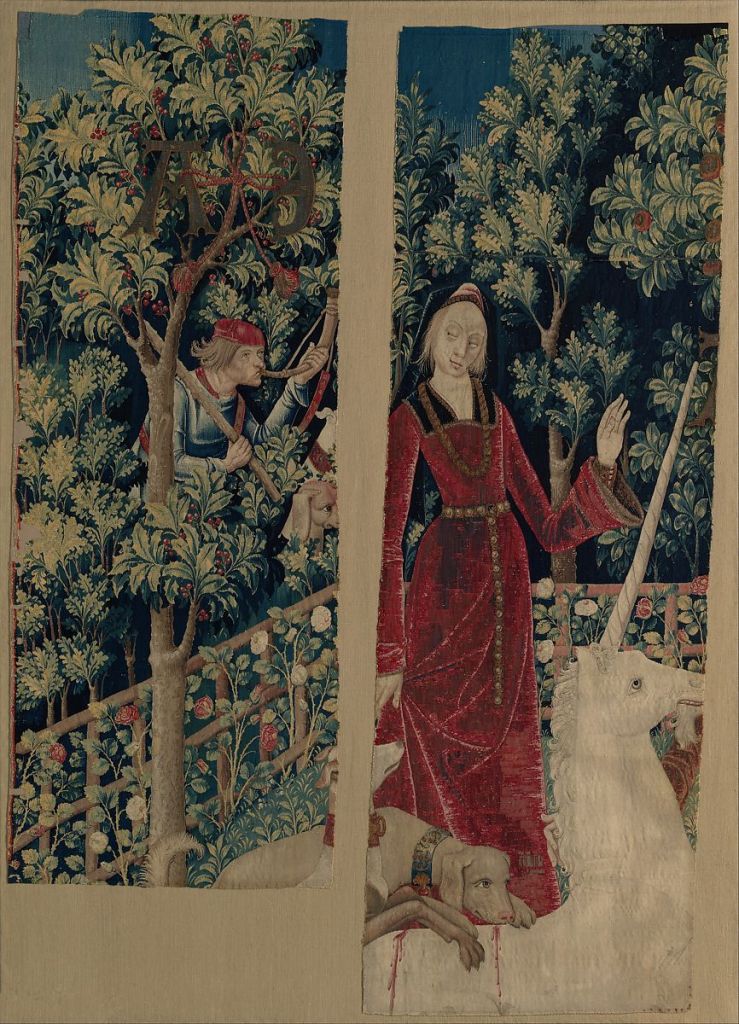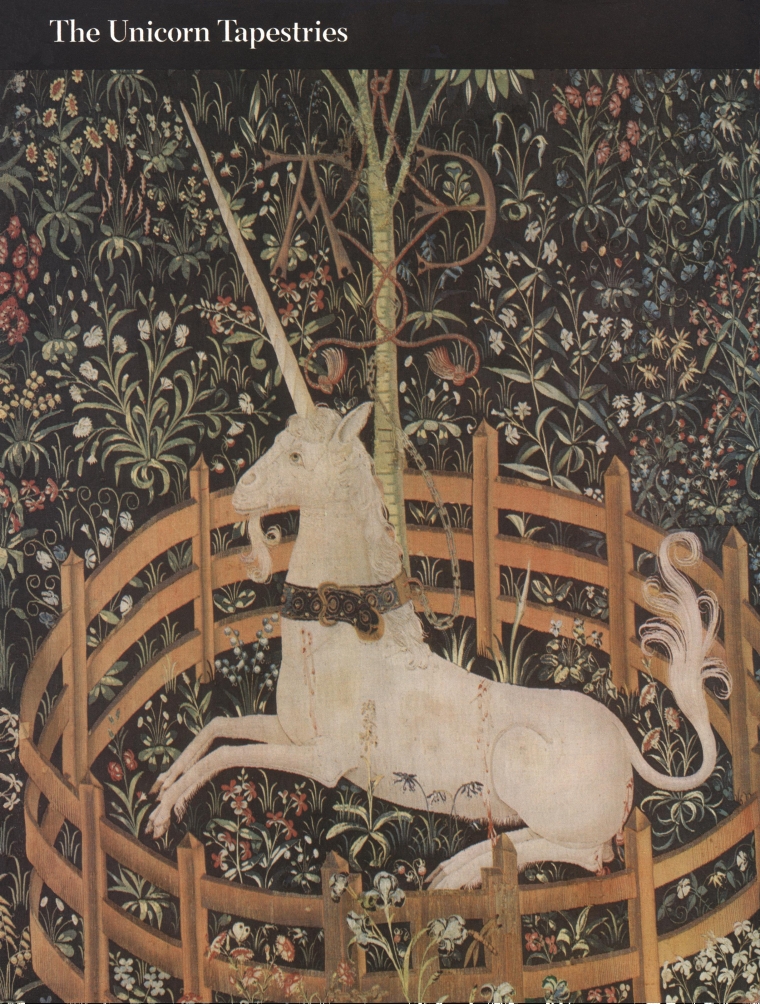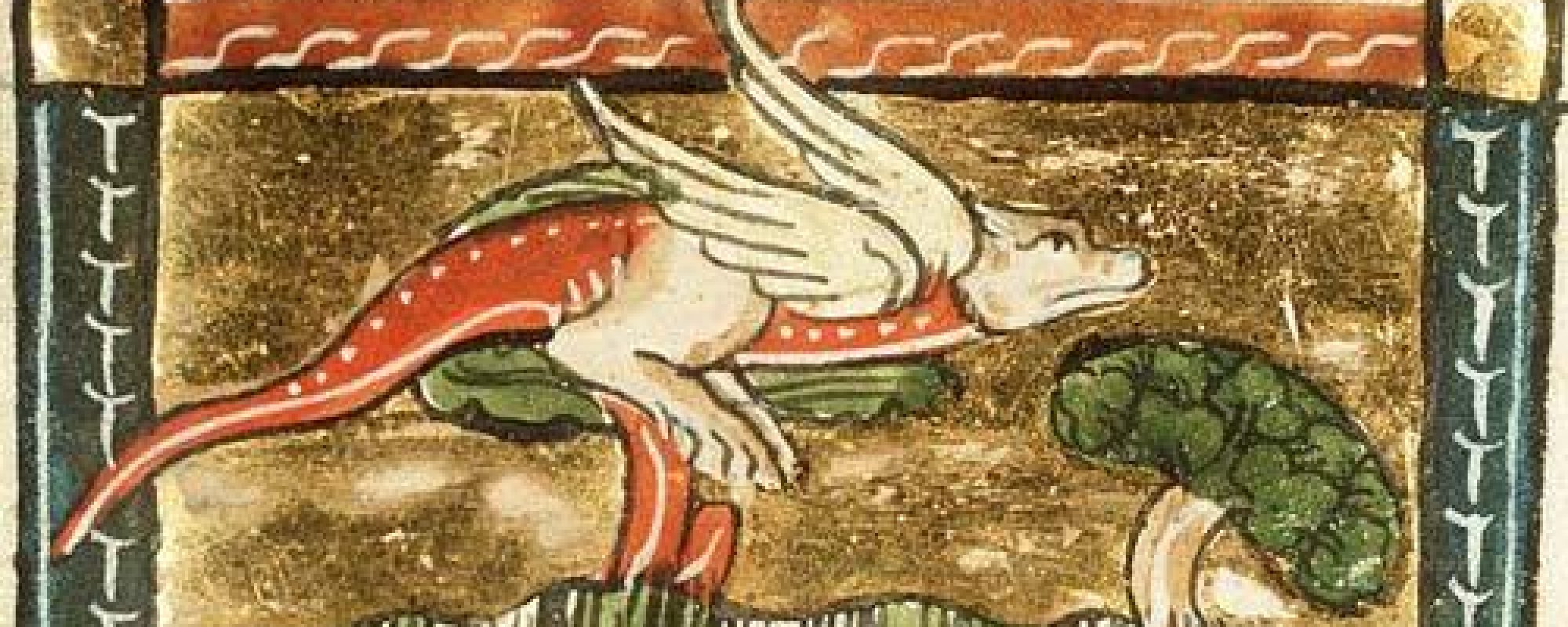Trammell McCullough🦄

Despite the myth of the unicorn originating in pagan mythology, medieval Christians brought the unicorn into Christian storytelling. The Physiologus described the unicorn as a kind of Christ figure, or an “allegorical mirror to Christ” that was “totally set apart in the medieval bestiary” (Wigglesworth 30). According to Christian lore surrounding the unicorn, the unicorn has only one horn to signify that Christ and the Father are one, as stated in the Bible in John 10:30 (Wigglesworth 30). The horn also is said to represent the “upright beam of the Holy Cross pointing towards heaven” (Wigglesworth 30). The unicorn is therefore a very visual representation of the attributes of Christ, and is also represented as a fierce and mighty creature “who cannot be captured by the powers of man or weapons” (Wigglesworth 31). The unicorn therefore takes on this very mysterious and all-powerful persona, much like Christ. Saint Ambrose even calls the unicorn “the only-begotten Son of God” (Wigglesworth 30). It is no surprise that the mythology of the Unicorn becomes an important part of medieval Christian imagery, lore, and symbolism.
The mythological creature of the unicorn has been present in the imaginations of cultures going back thousands of years and spans across the world. What was originally seen in the ancient myths of China and India found its way into ancient Greek mythology and eventually biblical translations and medieval culture and literature. In the middle ages the Unicorn was a mythological creature heavy with religious symbolism, despite its roots in pagan mythology. Unicorns are portrayed as powerful yet pure, and even present themselves as an allegorical Christ figure in Medieval Christian narratives.
Christian symbolism surrounding the Unicorn is heavily influenced by the medieval genre of the “bestiary” and in particular the Greek works of Physiologus which contains “ancient zoological knowledge in Christian interpretation” (Weitbrecht 51). In the Physiologus it is stated that the only way to capture a unicorn is not by a strong hunter, but by placing a “chaste virgin before him” (Weitbrecht 51). This interaction between virgin women and unicorns is seen throughout medieval culture, morphing into a kind of allegory for Christ and the virgin Mary and reflecting medieval ideas of gender (Weitbrecht 51). The idea of hunting or taming the unicorn is interpreted to mean the “incarnation of Christ” (Weitbrecht 51). This idea can be seen in the famous tapestry “The Unicorn Tapestry” in the seventh portrait in which the unicorn is “portrayed as being resurrected, stabled, and tied to a pomegranate tree” (Wigglesworth 35).

“hunting” for unicorns is likewise also interpreted as an allegory for the annunciation of Christ in Medieval German and Swiss textile art (Weitbrecht 52). In the “Physiologus” the unicorn “bounds forth into her (the virgin’s) lap”, representing the annunciation of Christ and impregnation of Mary (Weitbrecht 52). The unicorn’s horn is seen as euphemistic and “evokes another kind of appendage” representing the unicorn as a “phallic fertility monster” (Solberg 87). The animal aspect and especially the mythological animal of the unicorn is an allusion to the “mystery of the incarnation” (Weitbrecht 520).
Works Cited
Solberg, Emma Maggie. Virgin Whore. Cornell University Press, 2018. INSERT-MISSING-
DATABASE-NAME, INSERT-MISSING-URL. Accessed 10 May 2020.
“The Unicorn Tapestries.” The Metropolitan Museum of Art Bulletin, vol. 32, no. 1, 1973, pp.
177–224. JSTOR, http://www.jstor.org/stable/3258590. Accessed 12 May 2020.
“The Unicorn Surrenders to a Maiden (from the Unicorn Tapestries).” Metmuseum.org, http://www.metmuseum.org/art/collection/search/467654.
Weitbrecht. “”Thou Hast Heard Me from the Horns of the unicorns:” The Biblical
Unicorn in Late Medieval Religious Interpretation”. Interfaces: A Journal of Medieval
European Literatures, no. 5, Dec. 2018, pp. 49-64, doi:10.13130/interfaces-05-05.
Wriglesworth, Chad. “Myth maker, unicorn maker: C.S. Lewis and the reshaping of medieval
thought.” Mythlore, vol. 25, no. 1-2, 2006, p. 29+. Gale Academic OneFile, https://link-gale-com.ezproxy.bsc.edu/apps/doc/A154698397/AONE?u=birm89742&sid=AONE&xid=4c2c5e81. Accessed 11 May 2020.
